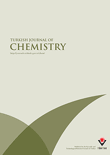
TURKISH JOURNAL OF CHEMISTRY
Scope & Guideline
Advancing Chemistry Through Collaborative Research
Introduction
Aims and Scopes
- Synthetic Chemistry:
Focuses on novel synthetic strategies and methodologies for the development of new chemical compounds, including organic, inorganic, and polymer chemistry. - Analytical Techniques:
Explores advanced analytical methods for chemical analysis, including spectroscopy, chromatography, and electrochemical techniques, aimed at improving detection and quantification in various matrices. - Materials Chemistry:
Investigates the design, synthesis, and characterization of new materials, particularly nanomaterials and polymers, with applications in energy, catalysis, and environmental science. - Biochemistry and Pharmacology:
Covers research on biochemical processes, drug design, and the evaluation of medicinal compounds, focusing on their therapeutic potential and mechanisms of action. - Environmental Chemistry:
Examines the chemical processes occurring in the environment, including pollution studies, remediation techniques, and the development of sustainable chemical practices. - Computational Chemistry:
Utilizes computational methods to model chemical systems and predict properties, aiding in the understanding of reaction mechanisms and molecular interactions.
Trending and Emerging
- Green Chemistry:
Research focusing on sustainable and environmentally friendly chemical processes is gaining momentum, emphasizing the reduction of hazardous substances and the development of biodegradable materials. - Nanotechnology and Nanomaterials:
There is an increasing number of studies on the synthesis and application of nanomaterials, particularly in catalysis, drug delivery, and environmental remediation, reflecting the growing significance of nanotechnology in chemistry. - Bioinformatics and Computational Drug Design:
The integration of computational methods in drug discovery and design is trending, with studies leveraging molecular modeling and simulations to predict the efficacy of new therapeutic agents. - Photocatalysis and Renewable Energy:
Research on photocatalytic processes for environmental cleanup and energy production is on the rise, aligning with global efforts to develop sustainable energy solutions. - Interdisciplinary Research:
There is a notable increase in interdisciplinary studies that combine chemistry with biology, physics, and materials science, reflecting the collaborative nature of modern scientific inquiry.
Declining or Waning
- Traditional Organic Synthesis:
Research focused solely on classical organic synthesis without novel methodologies or applications has decreased, as there is a growing preference for innovative approaches that integrate synthetic chemistry with other disciplines. - Basic Inorganic Chemistry:
There has been a reduction in studies that purely explore fundamental aspects of inorganic chemistry, as the journal shifts towards more applied research with direct societal or technological impacts. - Conventional Analytical Methods:
Papers centered on traditional analytical methods without significant advancements or novel applications have become less common, likely due to the rise of more sophisticated and integrated analytical techniques.
Similar Journals

CHEMICAL PAPERS
Exploring Frontiers in Biochemistry and Materials ChemistryChemical Papers is a distinguished scientific journal published by Springer International Publishing AG, catering to the fields of Biochemistry, Chemical Engineering, and Materials Chemistry. With an ISSN of 0366-6352 and an E-ISSN of 2585-7290, this journal has been a pivotal platform for the dissemination of research findings since its inception in 1973. Over the years, it has maintained a strong academic presence, as evidenced by its Q2 and Q3 rankings in several pertinent categories as of 2023, including Chemical Engineering and Industrial and Manufacturing Engineering. Although the journal is not currently Open Access, it remains an invaluable resource for researchers and professionals across its scope, promoting the advancement of knowledge in chemical sciences and fostering innovation within the industry. The publication is headquartered in Cham, Switzerland, contributing to a global dialogue on chemical research and its applications.

RUSSIAN CHEMICAL BULLETIN
Connecting Researchers through Pioneering Chemical Insights.RUSSIAN CHEMICAL BULLETIN, published by SPRINGER, serves as a pivotal resource in the field of general chemistry, covering a wide array of topics that impact both theoretical and applied chemistry. With an ISSN of 1066-5285 and a presence since 1993, this journal provides a platform for disseminating significant research findings, practical applications, and novel methodologies within the broader chemistry community. While it currently holds a Q3 ranking in the Chemistry (miscellaneous) category and occupies the 230th position out of 408 in the Scopus rankings, its reputation continues to grow, fostering collaboration and innovation among researchers and professionals alike. Although the journal does not offer an open-access model, it is committed to making findings accessible within the academic community, ensuring that valuable insights can inform future research. With an anticipated convergence of studies extending to 2024, the RUSSIAN CHEMICAL BULLETIN remains an essential reference for those dedicated to advancing chemical science.
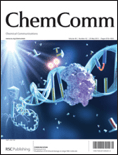
CHEMICAL COMMUNICATIONS
Bridging disciplines with critical insights and discoveries.Chemical Communications, published by the esteemed Royal Society of Chemistry, is a prominent journal within the field of chemical science, focusing on the dissemination of cutting-edge research in a variety of sub-disciplines including catalysis, materials chemistry, and electronic materials. Operating without an open access model, this journal provides critical insights from contributors around the globe, enhancing our understanding of complex chemical interactions and innovative applications. Ranked in the top quartile for several categories such as Ceramics and Composites, and Metals and Alloys, Chemical Communications boasts impressive Scopus rankings, securing strong positions across multiple fields and showcasing its influence within the scientific community. The journal is committed to advancing knowledge and fostering collaboration among researchers, professionals, and students, making it an invaluable resource for those looking to stay abreast of the latest advancements in chemistry and materials science. With a publication history dating back to 1965 and continuing into 2024, its rich archive serves as a vital repository of chemical research and development.
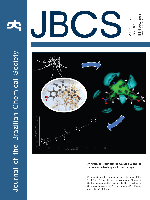
JOURNAL OF THE BRAZILIAN CHEMICAL SOCIETY
Advancing Chemistry: Unleashing Innovation from BrazilThe Journal of the Brazilian Chemical Society (ISSN: 0103-5053; E-ISSN: 1678-4790), published by the Sociedade Brasileira de Química, stands as a prominent outlet for disseminating high-quality research in the field of chemistry. Since its establishment as an Open Access journal in 1990, it has been committed to providing unrestricted access to innovative findings and discussions that propel the advancement of chemical sciences globally. Located in the vibrant research landscape of Brazil, this journal aims to showcase a wide range of topics including analytical, organic, inorganic, and physical chemistry, among others, catering to a diverse audience of researchers, professionals, and students alike. The journal holds a noteworthy distinction with a Q3 quartile ranking in the field of miscellaneous chemistry for 2023 and is indexed in Scopus, reflecting its growing influence in the academic community. With a publication cycle that spans continuously from 1990 through 2024, it serves as a vital resource for anyone seeking to stay informed about the latest trends and breakthroughs in chemistry.
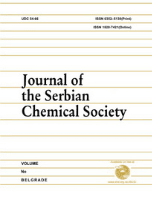
JOURNAL OF THE SERBIAN CHEMICAL SOCIETY
Elevating the Standards of Chemical ScholarshipJOURNAL OF THE SERBIAN CHEMICAL SOCIETY, an esteemed publication in the field of chemistry, is published by the SERBIAN CHEMICAL SOCIETY and has been an essential platform for the dissemination of research since 1930. With an ISSN of 0352-5139, this Open Access journal is dedicated to fostering communication and collaboration among chemists worldwide, making its contents readily accessible to researchers, professionals, and students alike. Based in Serbia, the journal features a wide range of topics within the domain of general chemistry, as reflected in its Scopus rankings, which place it in the 34th percentile among its peers. The journal's engagement with the global scholarly community is further underscored by its consistent publication history since 1985, with coverage extending through to 2024. As the journal continues to evolve, it remains committed to promoting high-quality research and advancing the field of chemistry.

RSC Medicinal Chemistry
Connecting Disciplines for Breakthrough MedicinesRSC Medicinal Chemistry is a pivotal journal in the realm of medicinal chemistry, published by the esteemed Royal Society of Chemistry. With a focus on innovative research that intersects various disciplines such as biochemistry, drug discovery, pharmaceutical science, and organic chemistry, this journal serves as a vital resource for researchers, professionals, and students alike. Its impressive impact factor and notable rankings—positioning it within the Q1 and Q2 quartiles across critical categories—underscore its significance in advancing knowledge and fostering collaboration within the scientific community. RSC Medicinal Chemistry is dedicated to open access, ensuring that cutting-edge findings on drug design and therapeutic applications are freely available to enhance global research efforts. With a commitment to publication excellence from 2020 to 2024, it is a prominent platform where groundbreaking ideas meet practical implications, making it indispensable for anyone committed to the forefront of medicinal advances.
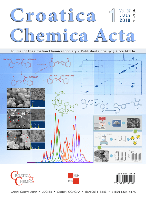
CROATICA CHEMICA ACTA
Fostering Collaboration in the World of ChemistryCROATICA CHEMICA ACTA, published by the Croatian Chemical Society, is a prominent open-access journal dedicated to fostering the dissemination of research in the diverse field of chemistry. With an ISSN of 0011-1643 and an E-ISSN of 1334-417X, this journal has been a vital platform for scientists since its inception, providing unrestricted access to groundbreaking findings since 1990. Located in Zagreb, Croatia, the journal covers a wide array of topics within general chemistry and strives to contribute significantly to the body of knowledge in the discipline. Although currently positioned in the Q4 quartile of the Scopus ranking within Chemistry (miscellaneous), and ranking #366 out of 408 journals, CROATICA CHEMICA ACTA plays a crucial role in promoting emerging research and innovative methodologies. As a valuable resource for researchers, professionals, and students, the journal encourages the exchange of scientific insights, with an eye towards fostering collaboration and advancing chemical sciences.

Moscow University Chemistry Bulletin
Navigating the Landscape of Modern ChemistryMoscow University Chemistry Bulletin is a distinguished academic journal dedicated to advancing the field of chemistry, published by PLEIADES PUBLISHING INC. With an ISSN of 0027-1314 and an E-ISSN of 1935-0260, this journal provides a platform for researchers, professionals, and students to explore a wide range of topics in general and specialized chemistry. While it holds a current Q4 ranking in the “Chemistry (miscellaneous)” category according to Scopus, the journal is committed to broadening its scope and visibility, aiming for greater impact in the global scientific community. Moscow University Chemistry Bulletin focuses on the publication of cutting-edge research, reviews, and discussions that stimulate innovation and collaboration. Although it is not an Open Access journal, it plays a crucial role in disseminating knowledge and fostering academic dialogue within the field, as it converges towards significant findings from 2004 to 2024. The continuous development of its content holds the potential to attract a diverse readership, making it a valuable resource for those involved in the chemical sciences.

REVUE ROUMAINE DE CHIMIE
Illuminating the Path of Chemistry Research and DiscoveryREVUE ROUMAINE DE CHIMIE is a distinguished academic journal in the field of chemistry, published by EDITURA ACAD ROMANE in Romania. With an ISSN of 0035-3930, this journal has been a valuable platform for disseminating original research and insights in the diverse realm of chemistry since its inception. The journal currently operates under a competitive tier, categorized in Q4 for miscellaneous chemistry fields, as reflected in its Scopus ranking of #348 out of 408, placing it within the 14th percentile. Aiming to foster scientific discourse and innovation, the REVUE ROUMAINE DE CHIMIE provides a repository of knowledge that is crucial for researchers, professionals, and students eager to advance their understanding and contribute to the global chemistry community. By bridging local and international research initiatives, this journal plays an essential role in enhancing the visibility of Romanian scientific contributions on the world stage.

JACS Au
Empowering the global scientific community with groundbreaking research.JACS Au, published by the American Chemical Society, is a premier open access journal dedicated to advancing research in the rapidly evolving fields of analytical chemistry, organic chemistry, and theoretical chemistry. Since its inception in 2021, JACS Au has quickly established itself as a leading platform for high-quality research, reflected in its Q1 rankings across multiple categories for 2023, including Organic Chemistry and Analytical Chemistry. The journal focuses on innovative methodologies and applications that drive the discipline forward, making it an essential resource for researchers, professionals, and students alike. With an impressive Scopus ranking, consistently placing in the top tiers of its categories, and offering a broad range of access options for its readership, JACS Au aims to foster collaboration and disseminate transformative ideas that impact the global scientific community. Exploring diverse topics within chemistry, this journal provides a vital conduit for sharing groundbreaking research and enhancing scientific dialogue.